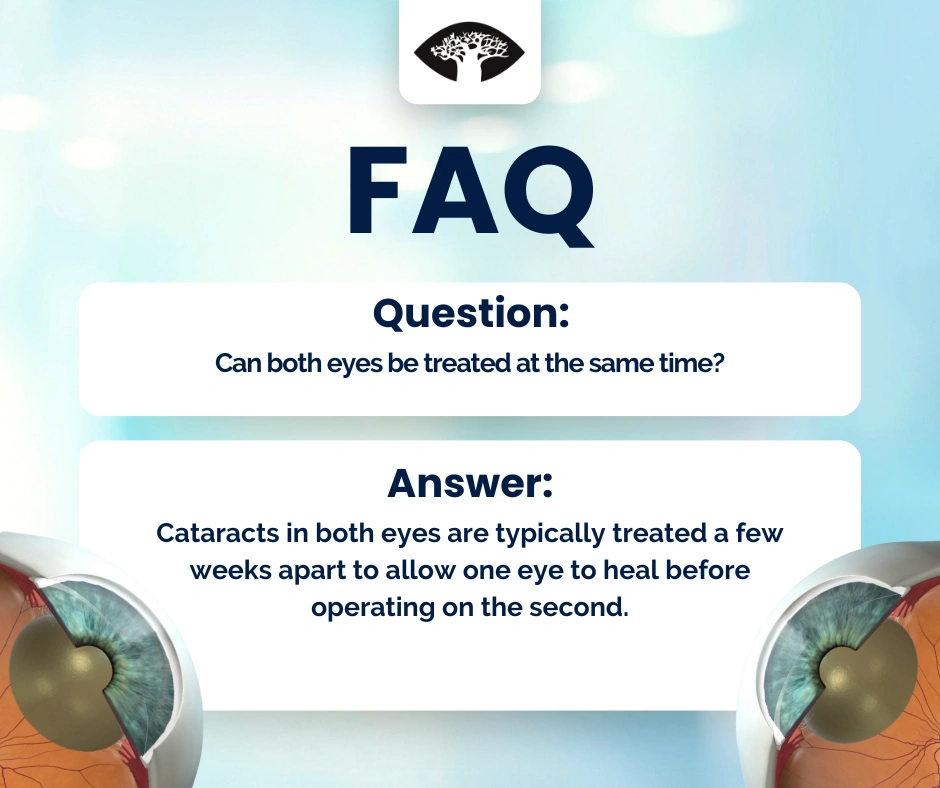While cataracts can develop in both eyes, cataract surgery is typically performed on one eye at a time. Treating both eyes during the same session is not standard practice in most settings — including at Dr. Cronje’s clinic — and for good reason.
Why Surgery Is Usually Done One Eye at a Time
Operating on one eye at a time allows the first eye to heal fully before addressing the second. This approach provides several benefits:
- Safety monitoring: It allows the surgeon to assess the healing process and visual outcome before proceeding with the second eye.
- Reduced risk: If a rare complication occurs (such as infection or inflammation), it’s limited to one eye, not both.
- Vision adjustment: Patients and surgeons can evaluate how well the chosen intraocular lens (IOL) performs, which may help refine the approach for the second eye.
How Soon Can the Second Eye Be Treated?
If both eyes need surgery, the second procedure is usually scheduled 1 to 4 weeks after the first, depending on the healing progress and visual outcome.
This staged approach ensures that the patient maintains functional vision throughout the recovery period and minimizes disruption to daily life.
Are There Exceptions?
In rare cases, simultaneous bilateral cataract surgery may be performed — usually in hospital settings under strict surgical protocols. However, it’s not routinely recommended for standard cataract cases due to the potential risks if complications affect both eyes at once.


